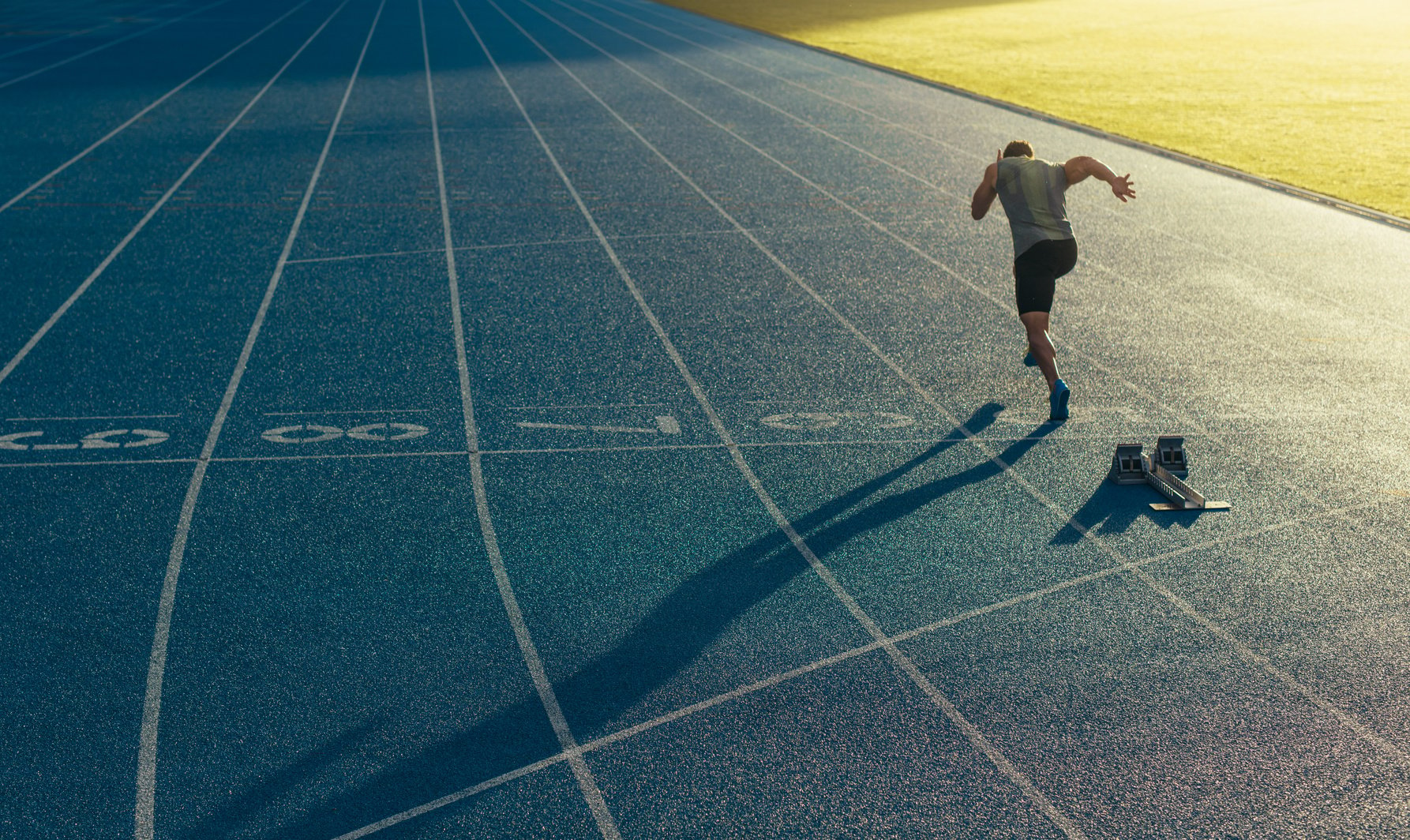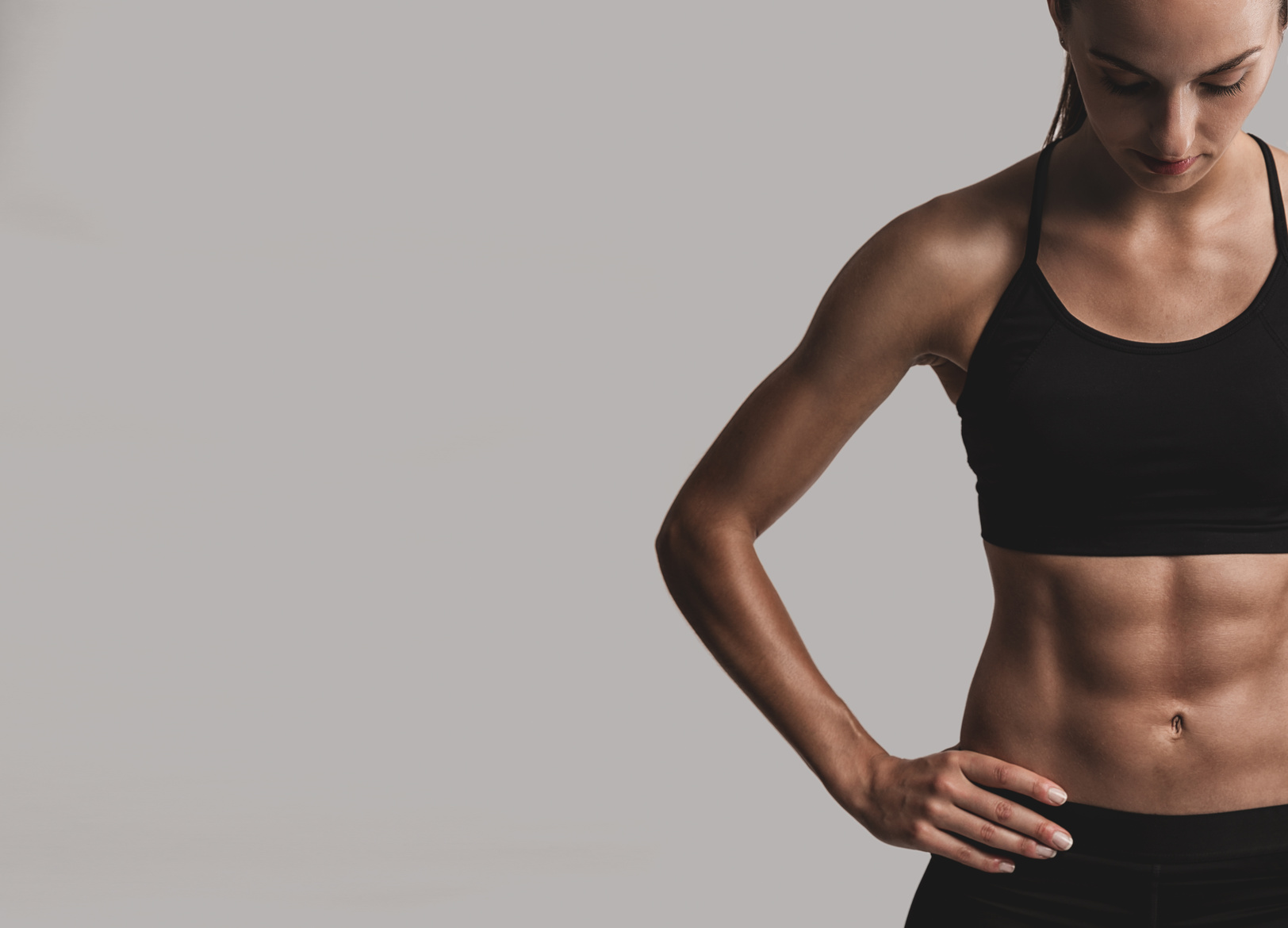Picture stepping on the scale and seeing a number that’s 100 pounds lighter. Yeah, that might feel like looking up at a mountain summit when you’re still at the bottom.
But here’s the truth—I’ve been there. I got into running in my 20s because I needed to drop weight, not to win medals.
How much I needed to lose weight? Around 40 pounds – not 100 pounds – but the process is relatively the same.
And over the past few years, I’ve coached folks who’ve lost 100+ pounds without starving themselves or living in the gym.
So let me be straight with you: This isn’t going to be quick. And it sure as hell won’t be easy.
Anyone promising some 6-week miracle plan? They’re selling you hot air.
But with a solid plan, the right headspace, and some grit—you can absolutely do this.
In this guide, I’ll lay out the exact game plan: realistic timelines, no-nonsense nutrition, how to move your body without breaking it, and the mindset shifts that carry you through the rough patches. I’ll also share real stories from people who made it happen.
This isn’t theory. It’s road-tested stuff.
By the end, you’ll have a clear roadmap. And more importantly, you’ll believe you can take that first real step.
How to Drop 100 Pounds (Safely)
Want the short version? Here it is:
You’re shooting to lose 1–2 pounds a week, which is the steady pace backed by experts (yep, even Healthline says so). That’s about a year or more to hit the 100-pound mark.
No crash diets. No punishing bootcamps. Just real changes that stick.
Here’s your checklist:
Create a Calorie Deficit. Eat fewer calories than you burn. Period. No magic. Track your food with an app or notebook—whatever works. You’d be shocked how much junk sneaks in. Cut soda. Ditch mindless snacking. It adds up fast.
Eat Like You Want to Feel Good. Go heavy on protein, fiber, and real food. Chicken, fish, veggies, eggs, oats. Keep treats around, but treat them like, well, treats—not a food group. You don’t have to starve. You just need to fuel like you give a damn.
Move More (But Start Small). You don’t need to run marathons on Day One. Just walk. Ten minutes. Then 20. Build up to 150 minutes of cardio a week (brisk walks, cycling, whatever). Toss in strength training twice a week so you keep your muscle. And do stuff you actually like—or you won’t stick with it.
Set Up Your Environment. Stock your kitchen with stuff that helps you, not sabotages you. Prep meals. Keep protein snacks handy. Log your wins—how your clothes fit, how you feel—not just your weight.
Stay Accountable (Even When It Sucks). Track progress in 10-pound chunks. Celebrate wins. Join a group, find a coach, text a friend. You will hit plateaus. You will screw up. The ones who make it? They keep showing up.
Bottom line? Losing 100 pounds the “right” way is the fast way. Fad diets just bounce you around. This plan helps you build habits that stick—so when the weight’s gone, it stays gone.
What’s more?
Weight loss isn’t a straight line. You might drop 8 pounds in one month, then just 2 the next. That’s fine. The key is to zoom out. Trends matter more than weeks.
Let’s get to the practical stuff.
1. Start With a Goal and a Mindset That Doesn’t Suck
Here’s where it all starts—not in the gym, not in your fridge—in your head.
You want to lose 100 pounds? Great. Now accept that it’s gonna take time. That’s not defeat—it’s strategy.
You’re not trying to win a 6-week contest. You’re building a new life.
So set a goal. And then break it down. 100 pounds? That’s a big number.
Start with 5. Then 10. That first 10 might take 4–6 weeks. And before you know it, you’ve already lost 25 pounds.
When I first started, I remember hitting 12 pounds down and thinking, “I can actually do this.” That belief is rocket fuel.
Also—don’t underestimate visualizing. Imagine the wins: walking without pain, playing with your kids without needing to sit down, not sweating through your shirt during errands. It’s not about a number on a scale—it’s how your life changes.
Expect slip-ups. Expect setbacks. One of my clients, Jason, lost 120 pounds—but it took him 3 years. He gained back 10 once during the holidays. But instead of quitting, he dusted himself off and kept going.
That’s what separates success from start-overs: not giving up when it’s hard.
And here’s your tough-love dose: If you’re still hoping for a shortcut, you’re not ready. But if you’re willing to change—day by day—you can get there.
You’re not broken. You don’t need perfect. You just need consistent.
2. Clean Up Your Diet
Let’s be honest—if you want to lose 100 pounds, the food side of the equation is everything.
You can’t outrun a bad diet, no matter how many miles you put in.
But here’s the thing: you don’t need to go on some miserable crash diet or ban every food you love to get there.
I’ve coached people who tried cutting entire food groups, living off shakes, or going “zero carbs.”
Sure, the weight comes off fast… but so does your sanity.
On keto? Check out this clean ketogenic food list.
Start with a Calorie Deficit — But Be Smart About It
Yeah, the science is simple: to lose weight, you’ve got to eat fewer calories than you burn.
But don’t get tunnel vision chasing some trendy “magic diet.” Focus on real food and reasonable portions. That’s where the win is.
Portion Awareness Is a Game-Changer
You don’t need to count every crumb for the rest of your life—but for a few weeks? Absolutely. I’ve been there myself—thinking I was “eating healthy” until I logged it. Surprise: I was eating way more than I thought.
Use a free app or just write stuff down in a notebook. Doesn’t matter how—just track it. Research backs this up: folks who log their meals tend to lose more weight . Aim for a steady calorie deficit—usually 500 to 1000 calories under your maintenance. That’s about 1–2 pounds per week.
Make Protein Your Wingman
Want to stay full, protect your muscle, and burn more fat? Then protein has to be a priority.
Add some to every meal—chicken, eggs, fish, Greek yogurt, beans, tofu, protein shakes—whatever works. High-protein diets are proven to cut hunger and help with fat loss, especially around the belly.
Plus, it helps preserve muscle while you’re dropping pounds, which keeps your metabolism from crashing.
Pile On the Veggies (and a Bit of Fruit)
Veggies matter for fat loss—low in calories, high in volume, packed with fiber. That’s the trifecta. They fill you up without weighing you down.
Try making half your plate non-starchy veggies—spinach, broccoli, peppers, cauliflower. Roast ’em with garlic and olive oil, throw in herbs. Seriously—this can convert even the veggie haters.
Fruit’s great too. Whole fruit has fiber, so it won’t spike your blood sugar the way juice or candy does. Just don’t go overboard.
Fiber = Your Secret Weapon
Fiber slows digestion, keeps you full, and stabilizes blood sugar. That means fewer cravings and less overeating. Whole grains, beans, nuts, veggies—they all work.
Instead of white bread or rice, swap in oatmeal, quinoa, or whole grain options.
And healthy fats? Don’t fear them. A bit of avocado, olive oil, or nuts goes a long way in keeping you satisfied.
A solid meal = protein + fiber + healthy fat. That combo destroys cravings better than any diet book ever could.
Cut Back the Junk (Without Going Cold Turkey)
Refined carbs—white bread, sugary cereal, soda—they’re calorie bombs with zero staying power. They’re the classic diet mistake.
You eat, and you’re hungry again 20 minutes later. They mess with your blood sugar and make it harder to burn fat.
Benji’s turning point was ditching liquid calories. He stopped drinking soda, started drinking water, and made smarter drink choices. That shift alone carved out a big calorie deficit over time.
You don’t need to swear off sweets forever. Just save them for when they’re really worth it.
Want something sweet? Try a square of dark chocolate instead of a whole donut. Small swaps = big wins.
Moderation > Deprivation
Here’s a truth bomb: if you say you’ll never eat pizza or ice cream again until you lose 100 pounds, guess what’s going to be on your mind all day?
Deprivation leads to obsession, and obsession leads to quitting.
Instead, learn to work your favorites into the plan. Love pizza? Have two slices and a big salad, not the whole pie. Burgers? Go with turkey or lean beef, skip the cheese, ditch the fries—or just eat half and enjoy it.
That’s the point: you need a diet you can live with. Otherwise, it won’t last.
Plan Ahead
If your plan is “I’ll just eat something later,” then later usually means pizza or chips.
Don’t wing it—build a weekly plan.
On Sundays, I prep a few basics: grilled chicken, hard-boiled eggs, chopped veggies. That way, when I’m hungry, the healthy stuff is ready.
You don’t have to be a kitchen wizard. If you find a few go-to meals that you like, repeat them.
My personal staples? Oatmeal and berries in the morning. Chicken, rice, and veggies for lunch. I don’t get bored—I get results.
Audit Your Pantry
If your kitchen’s loaded with chips, cookies, and soda, you’re not weak for grabbing them—you’re human. So set yourself up to win. Clean out the junk.
If it’s not there, you won’t eat it. That simple.
I’ve told clients to donate unopened snacks, toss the old candy, and start over. Then stock up with foods that help you stay on track—Greek yogurt, cut-up veggies, nuts (just a handful, not the whole bag), whole grain crackers.
Easy swaps, big difference.
3. Start Moving: Make Exercise Your Sidekick
Let’s get one thing straight—nutrition does most of the heavy lifting when it comes to dropping serious pounds.
But if you want to speed things up, feel better, and actually like the body you’re building? You’ve gotta move.
That doesn’t mean signing up for a military-style bootcamp or running 10Ks tomorrow. I’m not about that punishment mentality.
You don’t need to destroy yourself to get results. In fact, the best exercise plan is one that feels doable and keeps you coming back.
Start with Low-Impact Cardio
If your joints are grumpy or your fitness is at ground zero, forget about HIIT. Just walk.
I’ve coached folks who started by walking to the end of their driveway and back—and that was enough at first. One of my clients was over 300 lbs when she started. Her first “workouts” were walking around the block and doing dishes.
A few months later, she was down over 30 pounds—no 400-meter sprints required.
Start with 10 minutes if that’s all you can handle. Add a few minutes each week. Work toward 30 minutes a day, and if you can, shoot for 45–60 minutes as you get fitter.
You can break it into chunks—two 20-minute walks count. Don’t overthink it. Just keep it consistent.
If walking hurts, try water workouts or hop on a stationary bike. The goal isn’t to crush yourself—it’s to move regularly.
Hit the 150-Minute Mark
According to general health guidelines, aiming for 150 minutes of moderate activity per week is a solid goal. That’s 30 minutes a day, 5 days a week.
Totally doable.
And if you ever work your way up to 300 minutes a week? Even better.
What counts? Anything that gets your heart rate up but still lets you talk in short sentences: brisk walks, dancing, swimming, even yard work.
I always say this to new clients: A 20-minute walk five days a week beats a one-time, all-out 2-hour session that leaves you too sore to move for a week.
Don’t chase hero workouts. Build a habit.
Do What You Like
Hate the treadmill? Skip it. There’s no rule saying you have to suffer to lose weight. Try stuff until you find what sticks.
One reader told me she dropped 50+ pounds after falling in love with Zumba and yoga. Before that, exercise felt like punishment. Now it’s her therapy.
Like nature? Go hike. Like music? Dance around your kitchen. Even if you’re flailing like a newborn deer, you’re still burning calories.
The key is finding movement that makes you smile. That joy keeps you going when motivation fades.
Step It Up Gradually
As you lose weight and get fitter, what once felt like Everest will feel like a warm-up. That’s your sign to push a bit more. Maybe you jog for a few minutes during your walk. Maybe you ride a little faster.
Progress isn’t about perfection—it’s about effort over time.
But don’t be a hero. If you feel pain—not soreness, but sharp pain—or if you’re gasping like a fish out of water, ease off. This is a long game. Your body needs time to adjust. You’re building strength, lung power, and endurance, and that takes time.
I’ve seen so many people go too hard too fast, get injured, and quit. That’s not your story. Take it slow, and you’ll go far.
Add Strength Training When You’re Ready
Cardio’s great—but if you want a turbo boost? Strength training. It helps you keep muscle while you lose fat, and that means your metabolism stays higher.
Translation: you’ll burn more calories even when you’re watching Netflix.
No need to lift like a bodybuilder. Start with bodyweight stuff—chair squats, wall push-ups, resistance bands. Aim for 2–3 sessions a week. Once you feel confident, bump up the weight or reps.
And no—lifting won’t make you bulky. That’s a myth. Especially if you’re in a calorie deficit, you’ll just get leaner and tighter.
Promise.
If you’re unsure where to begin, a session or two with a trainer can help. Or follow beginner-friendly workouts from trustworthy sites. Just make sure you’re working all your major muscle groups each week—legs, core, chest, back, and arms.
Move More All Day
Not every movement needs to be a “workout.”
There’s something called NEAT—Non-Exercise Activity Thermogenesis.
Fancy term, but all it means is the calories you burn doing normal stuff: walking, fidgeting, cleaning, climbing stairs.
These little actions stack up. Walk instead of drive. Pace while you’re on the phone. Play with your dog. March in place during commercials. Set a timer and stand up every hour. Here’s your guide to walking 10,000 steps a day.
It’s not about burning 1,000 calories at once—it’s about never going hours stuck in one position.
I tell clients: being consistently active throughout the day matters just as much as your gym time.
Movement is movement. Use it.
Progress Takes Time
You might feel clumsy and breathless at first. That’s okay. Everyone starts somewhere.
Give it a few weeks and you’ll notice things getting easier. Your body is way more adaptable than you think. Treat it right and it’ll surprise you.
4. Track Your Progress (Beyond Just the Scale)
Let’s get one thing straight: if you don’t track it, you can’t fix it.
That’s not just some cheesy quote—it’s a truth I’ve seen play out with every client I’ve coached, and in my own journey too.
Now, I’m not saying you need to obsess over every single number, but if you’re gunning for something big—like dropping 100 pounds—then you need feedback. Real feedback. Not just “I feel kinda lighter today.”
Let’s talk about how to actually track progress in ways that matter—not just what the scale tells you.
Step on the Scale—But Don’t Let It Own You
Some folks swear by daily weigh-ins. Others check once a week. My advice? Do what keeps your head in the game without messing with it.
If you weigh in daily, cool—just understand that your weight is going to swing a bit.
Sodium, hormones, water retention… even a big meal the night before can throw things off.
That doesn’t mean you failed. What matters is the trend over time. If the line is generally headed down, you’re doing the work.
Research backs this up too—frequent weighing has been shown to help people stay aware and consistent with their efforts (Healthline even reported this based on several studies).
But if the scale ruins your mood, step back. Weigh once a week instead.
Just don’t ignore it out of fear—because that number is information, not judgment.
Measure the Body That’s Changing
You ever feel like the scale’s frozen—but your pants suddenly fit better? That’s why measurements matter.
I tell my clients to break out the measuring tape once a month. Hit the key spots—waist, hips, chest, arms, thighs, neck.
Trust me, you’ll be shocked by the changes that don’t show up on the scale. You might only lose 2 pounds in a month, but drop 2 inches off your waist.
That’s fat loss, baby. That’s progress.
So write it down. Celebrate that smaller belt notch like it’s a gold medal.
Take the Dang Photos
Look, I hated this one at first too. I didn’t want to see myself shirtless when I was out of shape. But now? I wish I had more of those early pics.
Take photos. Front, side, back. Every 4 weeks or so. Wear something that shows your shape. No need to share it with anyone—just keep it for you.
Because the mirror lies when change is slow. But photos? They tell the truth. One day you’ll look back and go, “Whoa. I did that.”
Track Health Wins—Not Just Weight
The scale’s just one piece. There’s stuff happening under the hood, too. Blood pressure dropping. Blood sugar getting better. Cholesterol improving.
I had one client who didn’t care much about the number on the scale—but the day he got off his meds? That was a celebration.
And don’t sleep on the smaller wins. You feel more energetic. You sleep better. You can jog up stairs without gasping like a fish. That’s real progress.
If you’re having a rough week, remind yourself: “Okay, I didn’t lose weight—but I walked the dog without needing a break. A month ago that would’ve wrecked me.” Write that stuff down.
Use a Journal or an App (Your Choice)
Whether it’s pen-and-paper or an app like MyFitnessPal, LoseIt, or Cronometer—log your journey.
Even just jotting your weight, meals, and mood each day builds awareness.
I can’t tell you how many people start eating better just because they don’t want to log those three donuts. It’s a sneaky accountability trick that works.
Celebrate the Non-Scale Wins (NSVs)
Let’s be real—some of the best milestones don’t show up in numbers.
You fit in that airplane seat comfortably. You ran your first nonstop mile. Your kid said, “Wow, you’re faster than me now!”
That’s the kind of stuff you hold onto when the scale’s being stubborn.
One of my clients kept their old pair of 4XL pants just to step into once in a while and laugh at how far they’d come. Another taped an old photo to the fridge—not to shame themselves, but to say, “Never again.”
Whatever works for you—do it. Celebrate those wins like they’re trophies, because they are.
Quick Warning: Don’t Obsess Over Every Hour
Here’s where people go sideways—checking their weight three times a day, wrapping measuring tape around their wrist at midnight…
Don’t do that. Stick to a routine: daily or weekly weigh-ins, monthly measurements, and maybe a photo check-in once a month. Then move on with your day.
Live the plan. Let the data catch up.
Here’s a guide on how to measure your body fat.
5. Build a Support System and Stay Accountable
Let’s be real—dropping 100 pounds isn’t something you should try to tackle alone.
This isn’t just about food and workouts. This is about having people in your corner when your brain’s screaming, “Screw it, let’s quit.”
Having support is like wearing good running shoes—on the hard days, it can be the only thing keeping you from breaking down.
Tell Your People (Even If It Feels Weird)
I know, it can feel awkward to say, “Hey, I’m trying to lose 100 pounds.” Especially if you’ve tried before.
But telling close friends or family can turn them into your personal hype squad.
When I first told my girlfriend I was cutting out soda—she didn’t laugh or roll her eyes. She stopped stocking the fridge with it and joined me for walks instead.
That made a difference.
If you’ve got someone like that in your life—hold onto them. Tell them what you need: maybe it’s not bringing junk food home, maybe it’s checking in once a week.
Don’t expect everyone to jump in, though. Some folks won’t get it. That’s okay. Focus on the ones who do.
Get a Buddy or Group
There’s something powerful about knowing someone else is grinding with you. Maybe it’s a coworker, someone from your gym, or a new friend you meet on a Reddit thread.
If they’re trying to lose weight too, you can keep each other in check.
You can swap progress updates, complain about cravings, celebrate wins. Even a quick text—“I hit my step goal today”—can fire up motivation.
No in-person buddy? No problem.
Online communities like /r/loseit on Reddit are full of people who’ve lost 100+ pounds and share both the highs and the screw-ups. I’ve lurked there for years—it’s raw, honest, and helpful.
And sometimes, strangers on the internet are more supportive than people we know. Use what works.
Structured Programs (If That’s Your Jam)
Some people thrive with rules and routine. If that’s you, look into things like Weight Watchers or TOPS. They’re not magic pills, but the regular check-ins and built-in community can give you a serious boost.
Hiring a coach is another solid move—someone to design a plan and keep you on it. It’s not cheap, but if you’ve got the cash, having a coach who gets your body and your mindset can make a massive difference.
I’ve coached folks through massive weight loss before, and having that weekly accountability? Game-changer.
Use Your Tech as Backup
Even if you don’t have a buddy or coach, you’ve got a secret weapon in your pocket: your phone.
Apps like MyFitnessPal or HabitShare let you track streaks—steps, meals, workouts. Seeing a 30-day streak is oddly satisfying.
Fitness watches, smart scales, step counters—they all help you visualize progress.
And yeah, some apps let you bet real money on your goals. If betting $20 means you’ll stay out of the cookie jar, why not?
Think of your phone as your digital coach. No judgment, just gentle nudges.
Watch Out for Saboteurs
Now for the hard truth: not everyone wants to see you succeed.
Sometimes it’s subtle—“C’mon, just skip the gym tonight” or “You’ve been so good, treat yourself.” Other times, it’s straight-up jealousy.
I’ve seen this in real life. A friend loses 40 pounds, and suddenly her coworkers act distant. People project their insecurities.
You’ve got to hold your ground.
It’s okay to say, “This is important to me. Please don’t push me to eat stuff I’m trying to avoid.”
And yeah, you might need to take space from certain people for a while—especially if they’re constantly dragging you off course.
One guy told me after his 100-pound loss, “There are people I just can’t be around if I want to stay healthy.” That’s real.
Social Media: Use It, Don’t Let It Use You
Creating an anonymous Instagram or TikTok just to document your journey? Do it.
I’ve seen people post daily check-ins, progress pics, even short workout clips—and the encouragement they get back is wild.
But don’t fall into the trap of comparing your Day 3 to someone’s Day 300. Social media’s a highlight reel.
Use it as fuel, not as proof you’re not doing enough.
Celebrate the Small Wins
5 pounds down? Celebrate it.
New PR on your walk pace? Hell yes.
Pants feel looser? Do a little dance.
Tell your crew. Post about it. Treat yourself—just not with food. Buy new shoes. Go for a massage.
I’ve seen folks make jars with 100 beads—one for every pound they plan to lose. Every time they drop a pound, they move one bead to a second jar.
It’s visual. It’s satisfying. It works.
You’re building something big, and every step matters.
6. How to Power Through Plateaus Without Quitting on Yourself
Let’s not sugarcoat it—losing 100 pounds isn’t some straight, easy trail. It’s full of potholes. You’ll hit plateaus. You’ll slip up. You’ll question everything.
But that doesn’t mean you’re failing. It just means you’re on the path.
Plateaus Happen. Don’t Panic.
Here’s the deal: even when you’re doing everything right—eating clean, moving more, staying on track—your weight might still stall.
That’s called a plateau. It’s not a sign you’re broken. It’s biology.
Your body’s smart. Drop a bunch of weight, and your metabolism naturally slows down a bit because there’s less of you to carry around. It’s like your body goes, “Alright, let’s conserve energy.”
I’ve coached folks who hit a wall halfway through their journey. Sometimes it’s 3 weeks with no change. Then out of nowhere—bam—five pounds gone. It’s what some call a “whoosh.” Your body holds water, adjusts, then finally lets go.
So, if the scale’s frozen, here’s your play:
- Check your habits. Have your portions crept up?
- Getting enough protein?
- Maybe toss in 10 more minutes of movement or try something new.
Sometimes you don’t need to overhaul everything. A small shift can restart progress.
Just don’t jump to crash diets out of fear. That’s panic, not progress.
“Trust the process. Stay consistent. Make one smart tweak. Keep going.”
When You Slip, Bounce Back Like a Pro
Look, life’s gonna throw you curveballs—holidays, stress, birthdays, random Netflix-and-pizza nights. You might overeat. Skip workouts. Gain a few pounds back.
The danger isn’t the slip-up. It’s the reaction.
Most people spiral. They say, “Screw it, I blew it,” and fall completely off the wagon. That’s what you can’t afford.
Here’s what you do instead: you catch yourself. Right away.
Had a blowout dinner? Cool. Acknowledge it. Chug a big glass of water. Maybe go for a walk to clear your head.
And then? Next meal—clean slate. No starvation. No punishment workouts. Just normal, sane choices.
That’s what real long-term success looks like. You recover fast and don’t let shame steer the wheel.
Stop With the All-Or-Nothing BS
You ate a donut. So what? Doesn’t mean you now need to eat the whole box.
This kind of perfectionist thinking—“I ruined the day”—kills more progress than the donut ever will. Eat it. Enjoy it. Move on.
Progress is about patterns, not perfection. Some days, you’re gonna nail your goals. Other days, 50% is the best you can do.
That’s still better than zero. Keep stacking good days, and you’ll get there.
Celebrate the Wins You Can’t Weigh
When the scale isn’t moving, you’ve got to zoom out. Look at other victories:
- Are your clothes looser?
- Can you walk longer without gasping?
- Are you sleeping better? Less joint pain? More energy?
One of my clients hit a plateau and decided to train for a 5K just to stay focused. Guess what? The weight started dropping again—and she got addicted to running in the process.
Weight loss isn’t just physical. It’s mental, emotional, even spiritual. Recognize all the growth, not just what the scale tells you.
Reconnect With Your “Why” When Doubt Creeps In
It’ll happen. You’ll think, “Why am I even doing this? It’s taking forever.”
Those thoughts are normal—but they’re not facts.
When that self-doubt hits, you’ve got to anchor yourself.
Why did you start this journey?
- Is it to live longer for your kids?
- Fit in plane seats comfortably?
- Feel strong in your own skin?
Write it down. Stick it on your fridge. Keep it in your phone notes. Whatever it takes—make your why visible and unshakable.
Personally, I’ve pulled strength from others’ stories more times than I can count. Reading about someone who lost 80, 100, 150 pounds—it reminds you this is possible.
You just need to keep showing up.
Every Setback Is a Lesson—If You’re Willing to Learn
Let’s say you went on vacation, hit the buffet too hard, and came home 5 pounds up. That’s not failure—it’s feedback.
Lesson? Maybe next time plan a hike, pack some protein snacks, or decide in advance how many desserts you’ll actually enjoy without going off the rails.
Or maybe you stress-ate a tub of ice cream after a rough workday. That tells you food is your coping tool. Cool—now what’s another tool you can use? Walks, music, journaling, venting to a friend?
If you treat setbacks like teachers, not enemies, you’ll get stronger every time.
Don’t Be Afraid to Ask for Backup
Sometimes willpower isn’t enough—and that’s okay.
If emotional eating or mental health is getting in the way, a good therapist can work wonders. Same with a dietitian if you’re stuck and unsure what’s going wrong.
There’s no shame in needing help. Your weight loss journey is part of your health journey.
And health is a team sport.
“I’ve sent runners to PTs, nutritionists, therapists. Why? Because getting help is a sign of strength, not weakness.”
7. Stay Fired Up with Milestones, Rewards & Real Growth
Let’s be real — staying motivated for a journey this big? It’s not about being pumped 24/7. No one is.
That kind of fire fades if you don’t keep stoking it. What you need is a system that keeps lighting the match — day after day, mile after mile.
This part isn’t just about dropping weight. It’s about building mental muscle too.
Break It Down & Celebrate the Wins
You’re not just losing 100 pounds. You’re stacking small victories until they add up to something massive.
Set milestones that feel real to you. Maybe every 10 pounds. Maybe hitting a weight that starts with a “1” instead of a “2”. Whatever gives you that little extra push.
And when you hit one? Don’t just say “cool” and move on. Reward yourself.
Not with food — with something that reminds you you’re crushing it.
- A new pair of shoes at 20 pounds down
- A solo getaway or spa day at 50
- A new bike or a badass photoshoot at 80
Even the little things count — a new book, a bubble bath, a movie night with a healthier snack stashed in your bag.
Doesn’t have to cost much. It just has to say: “Look how far I’ve come.”
Momentum is built on celebration. Don’t wait until the finish line to feel proud.
Write It Out
Grab a notebook, a doc, anything. Journaling your struggles, wins, and everything in between gives your brain proof that you’re making moves.
Write letters to your future self. Or from your future self.
Sounds weird? Maybe. But it works. I’ve done it with clients — they come back weeks later saying that letter snapped them out of a slump.
Borrow Fire from Others
Don’t isolate.
Go watch a weight loss doc, scroll through some transformation stories, join a community.
You’ll find people who’ve lost 100, 150, 200 pounds. They’ve been where you are. And they found their way out.
I read about a guy who lost 100 pounds by hiking. First summit he reached? He broke down in tears. I still think about that story. Grit like that is contagious.
Ask yourself: What’s your version of that summit moment?
See It, Feel It, Own It
Picture you — not the old version, not the “trying” version — but the one who made it.
- What do you look like?
- How do you move?
- What can you do that you couldn’t before?
Can you chase your kids around the park without gasping for air? Walk into any store and grab whatever fits — not just what hides?
Maybe it’s the moment you cross the finish line of your first 5K.
Visualize that version of you every damn day.
Not just reaching the goal, but living in that new reality. The one where this isn’t some temporary challenge — it’s just who you are now.
Ride the Emotional Rollercoaster
This isn’t just about body fat. You’re shedding old habits, old mindsets, sometimes even old identities.
You’ve been “the big guy” or “the big girl” for years. What happens when that label doesn’t fit anymore?
That’s not always easy.
There will be emotional highs — the day someone compliments you, the day your jeans fall off your hips — and there will be low points too.
That’s all part of the process.
Therapy helps some people. Talking to a friend. Journaling. Meditating. Do what helps you feel the feels without getting stuck in them.
Losing weight might change your body. But growing through it? That’s what changes your life.
Switch It Up, Keep It Fresh
What fires you up in month one might bore you to death in month ten.
Stay flexible. Get curious. Sign up for a 5K. Join a walking challenge. Try a recipe you’d never normally cook. Track your steps and aim for new highs.
If things feel stale, shake them up.
I once had a client who hated the gym. So we swapped in trail hiking — and that lit her up like nothing else. Boom, consistency unlocked.
Keep looking for what makes this lifestyle feel alive, not like a grind.
Don’t Just Praise the Scale
Maybe you didn’t drop a pound this week.
But…
- You walked instead of stress eating
- You cut your soda habit in half
- You ran up the stairs without gasping
Those wins matter. That’s real growth.
Start thinking of yourself differently:
I’m someone who takes care of my body. I’m active. I don’t give up.
That shift in identity? That’s the engine that gets you to your goal — and helps you stay there.
Go Back to the Start
Why did you start this?
Maybe it was a scary doctor visit. Maybe an embarrassing photo. Or a moment when you realized, “I don’t want to feel like this anymore.”
Keep that moment close. Not to shame yourself, but to remind you what you’re walking away from.
Some folks tape a “before” photo on their fridge. Others keep a list of reasons and reread it every time the drive starts to dip.
Use what hits you hardest.
Progress Fuels Progress
Once the pounds start dropping… once your jeans fit better… once someone says, “You look different,” — that’s when motivation stops being something you chase.
It becomes something you ride.
But those first few weeks? That’s the battle zone. You might not see much progress. You’re tired. Sore. Maybe cranky.
Push through that fog. That’s when your brain starts rewiring itself to believe: “I can actually do this.”
I’ve seen it over and over as a coach. Someone loses 20 or 30 pounds and suddenly? They walk different. They speak different. They know they’ll hit -100. That belief is gold.
Final Words
Look — you’re not just dropping 100 pounds.
You’re gaining confidence, discipline, strength, and clarity.
You’re becoming someone who doesn’t quit.
That person you imagined? They’re waiting for you up the mountain. They’re waving. Telling you, “Come on — the view’s worth it.”
So keep moving. Keep climbing.
Every healthy meal, every workout, every hard decision — it’s a step closer.













